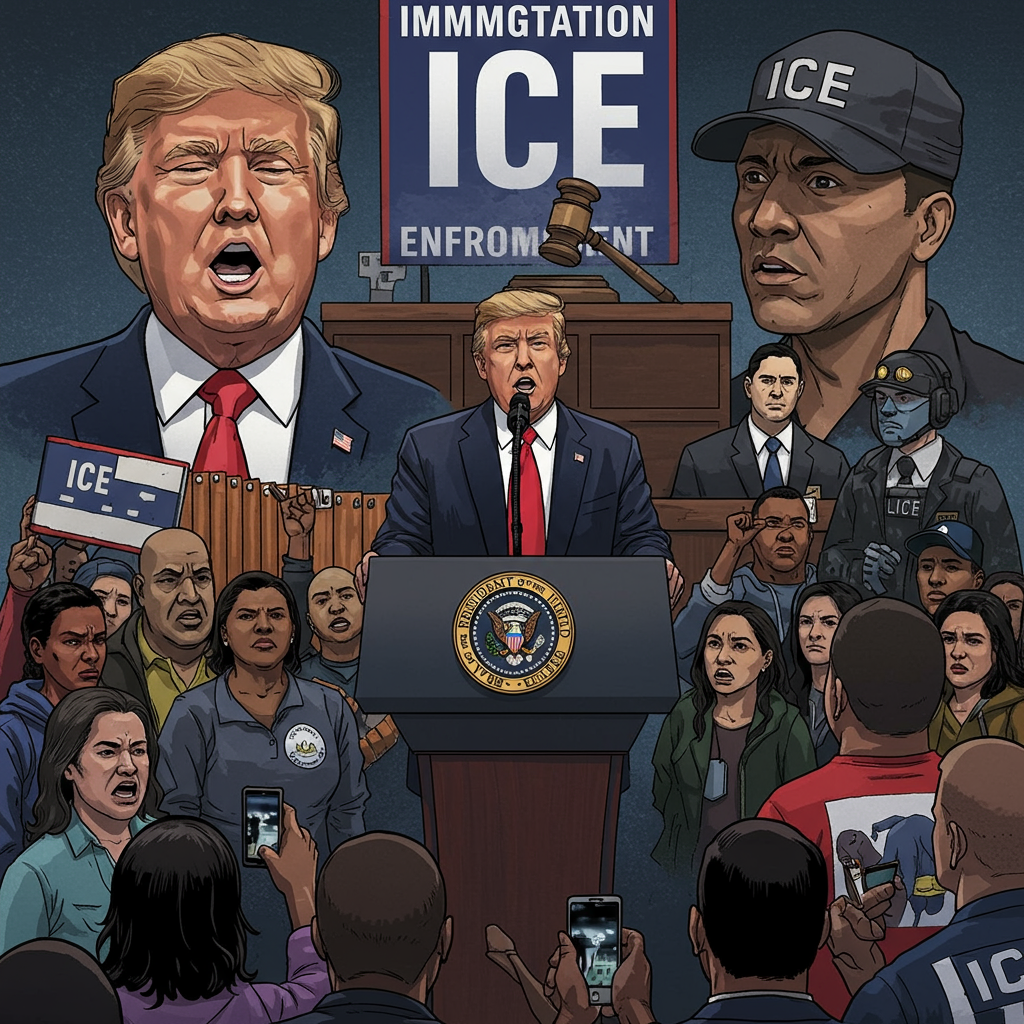The landscape of childhood immunization just saw an unprecedented shift, leaving many parents with urgent questions about their children’s health. For the first time in three decades, the American Academy of Pediatrics (AAP), a leading authority on child health, has released COVID-19 vaccine recommendations that diverge significantly from current federal guidance from the Centers for Disease Control and Prevention (CDC). This groundbreaking development impacts millions of families and marks a pivotal moment in public health policy. Understanding these distinct guidelines is crucial for making informed decisions about pediatric COVID vaccines.
This guide delves into the AAP’s explicit recommendations for children and infants, the scientific rationale behind their stance, and the controversy surrounding the federal health agencies. We’ll also explore what this means for vaccine access, insurance coverage, and how parents can navigate the conflicting advice to ensure their children’s well-being.
Breaking Down the AAP’s New Pediatric COVID Vaccine Recommendations
The American Academy of Pediatrics, renowned for its long history of evidence-based health guidelines, updated its comprehensive immunization schedule with clear directives for COVID-19 vaccination in young children. Unlike the federal guidance, which has shifted towards “shared clinical decision-making” for many children, the AAP outlines specific recommendations designed to protect the most vulnerable.
Targeted Vaccination for Infants and Young Children
The AAP’s updated guidance prioritizes the youngest demographic, emphasizing their heightened risk. Specifically:
Infants and Toddlers (6 through 23 months): The AAP strongly recommends that all healthy children in this age group receive a COVID-19 vaccine. The only exclusion is for those with known allergies to the vaccine or its ingredients. This universal recommendation underscores the AAP’s assessment of risk in this age bracket. Dr. David Higgins, an AAP spokesperson, highlighted that infants and toddlers face the highest risk of hospitalization and severe illness from COVID-19 among all individuals under 18, with rates comparable to adults aged 50 to 64. Furthermore, very young children often lack the protective benefits of prior exposure, infection, or vaccination, and maternal antibodies wane quickly, making them particularly vulnerable.
Children and Adolescents (2 through 18 years): For this broader age range, the AAP recommends a single dose of the COVID-19 vaccine for several high-risk groups. These include children with underlying medical conditions that increase severe illness risk (like asthma), residents of long-term care facilities, individuals who have never been vaccinated against COVID-19, or those living in households with other high-risk individuals. Crucially, the AAP also asserts that the vaccine should be readily available to all children in this age group, even if they do not fall into these specific high-risk categories, allowing parental choice and broader access to protection.
These AAP COVID vaccine recommendations children represent a significant departure, rooted deeply in the academy’s scientific and data-driven approach to child health.
Why the AAP Diverged: Concerns Over Federal Leadership
The unusual split stems from the AAP’s profound concerns regarding recent changes within the CDC and its Advisory Committee on Immunization Practices (ACIP). The ACIP is typically the federal body responsible for shaping national vaccine policy, but its composition and processes have recently undergone a significant overhaul.
Health Secretary Robert F. Kennedy Jr. dismissed all 17 members of the expert panel earlier this year, replacing them with a smaller group of seven individuals. The AAP, among other public health organizations, publicly criticized this move, stating that some new members have a “history of spreading vaccine misinformation.” This perceived undermining of scientific integrity led the AAP to view the new ACIP as “illegitimate.” Dr. Sean O’Leary, chair of the AAP Committee on Infectious Diseases, articulated these concerns, explaining the AAP’s decision not to participate in a June ACIP meeting – a historical first. He noted that the meeting presented a “false narrative that the current vaccine policies are flawed and that they need fixing.”
This dramatic shift in federal health leadership’s approach to vaccine guidance created an untenable situation for the AAP, prompting them to issue their independent guidelines. They stress their recommendations are “rooted in science and are in the best interest of the health of infants, children and adolescents,” a commitment they’ve held for over 90 years.
The Federal Counterpoint: Accusations and Differing Stances
In response to the AAP’s independent stance, the US Department of Health and Human Services (HHS), under Secretary Kennedy, issued sharp criticism. HHS communications director Andrew Nixon accused the AAP of “undermining national immunization policymaking with baseless political attacks” and bypassing the CDC’s advisory process. Nixon also suggested the AAP’s recommendations might be influenced by “commercial interests” or “Big Pharma,” citing donations to the AAP’s “Friends of Children Fund.”
Conversely, the federal CDC vaccine guidance, as revised in May, no longer advises COVID-19 vaccines for healthy children of any age. For healthy children aged 6 months to 17 years, the federal agency now frames vaccination as a matter of “shared clinical decision-making.” This change, according to a CDC spokesperson, aligns with the “Trump administration’s commitment to common sense,” quoting FDA Commissioner Marty Makary who stated there’s no evidence healthy kids need it. This stark contrast highlights the deep philosophical and scientific divide now defining public health policy in the U.S.
The AAP vehemently denies allegations of financial influence, with President Dr. Susan J. Kressly asserting that their recommendations are based “only in the science, the needs of children, and the care that pediatricians have for the children in every community.” Other independent groups, like the Vaccine Integrity Project, have also reviewed data, finding evidence “very consistent” with the AAP’s latest recommendations, further supporting the call for evidence-based policy.
Implications for Families: Access, Insurance, and Confusion
This unprecedented divergence between the AAP and federal agencies naturally creates confusion for parents seeking clear guidance. When health recommendations from trusted sources conflict, knowing how to proceed becomes challenging.
Potential Challenges for Vaccine Access and Coverage
A major concern raised by the AAP is the potential impact on vaccine access and insurance coverage. Under the Affordable Care Act, insurance companies are required to cover vaccines recommended by the ACIP. If the federal ACIP does not recommend pediatric COVID vaccines for certain groups of children, it could jeopardize their insurance coverage.
While the CDC has stated that the federal Vaccines for Children program would continue to cover COVID-19 shots for eligible children, questions remain about whether “healthy children” will be deemed eligible under new federal interpretations. The AAP is actively engaging with private insurers and policymakers to ensure its evidence-based recommendations translate into accessible and covered vaccinations for all children. Adding to this uncertainty, the US Food and Drug Administration (FDA) has indicated it may limit future COVID-19 shot authorizations primarily to older individuals and those at high risk, potentially not renewing authorization for Pfizer’s COVID-19 vaccine for children younger than 5 years old. This could directly impede the AAP’s recommendations for infants and very young children.
Navigating Conflicting Advice: Your Pediatrician is Key
Given the complex and conflicting information, both the AAP and other medical experts advise parents to consult their child’s pediatrician. Pediatricians have a holistic understanding of a child’s health history, individual risk factors, and the latest scientific evidence. They can offer personalized, trusted guidance based on a commitment to children’s well-being, helping families navigate the updated children’s immunization schedule and make the best choices for their specific circumstances.
Beyond COVID-19: A Broader Look at Child Health
While the COVID-19 vaccine recommendations have dominated headlines, the AAP’s updated schedule also includes new guidelines for other critical immunizations. The academy issued updated recommendations for RSV and flu vaccines, alongside more than ten other routine childhood vaccinations. This broader approach reflects the ongoing commitment of pediatricians to comprehensive preventive care.
The Vaccine Integrity Project, a group of outside public health experts, has independently reviewed data on COVID-19, flu, and RSV vaccines. Dr. Michael Osterholm, who leads the initiative, confirmed that their findings are “very consistent” with the AAP’s latest recommendations. This independent validation further underscores the scientific rigor behind the AAP’s guidance.
The current tensions highlight a crucial debate about scientific autonomy, public trust, and the best way to protect children’s health in a rapidly evolving public health environment.
Frequently Asked Questions
Why did the American Academy of Pediatrics (AAP) issue new COVID-19 vaccine recommendations that differ from the CDC?
The AAP issued new, more explicit COVID-19 vaccine recommendations due to significant concerns about recent changes within the CDC’s Advisory Committee on Immunization Practices (ACIP). Health Secretary Robert F. Kennedy Jr. dismissed the previous ACIP panel, replacing members with individuals the AAP claims have a “history of spreading vaccine misinformation.” Viewing this new committee as “illegitimate” and observing a “false narrative” within federal policy discussions, the AAP felt compelled to release independent, science-backed guidance to prioritize child health, specifically citing high hospitalization rates in infants and toddlers.
Which children are specifically recommended for COVID-19 vaccination by the AAP?
The AAP provides age-specific COVID-19 vaccine recommendations. They advise that all children aged 6 through 23 months should receive a COVID-19 vaccine, unless they have known allergies. For children aged 2 through 18 years, the AAP recommends a single dose for those at high risk of severe illness, residents of long-term care facilities, individuals never vaccinated against COVID-19, or those in high-risk households. Furthermore, the AAP states the vaccine should be available for all children in this 2-18 age group, regardless of their specific risk status, allowing parents the choice for protection.
How should parents navigate the differing COVID-19 vaccine advice from the AAP and CDC?
Given the conflicting guidance, parents should consult their child’s pediatrician. Pediatricians can provide personalized advice based on a child’s individual health history, risk factors, and the most current scientific evidence. They are equipped to explain the nuances of both the AAP’s evidence-based recommendations and the federal “shared clinical decision-making” approach, helping families make informed decisions about their child’s immunization schedule and ensuring continued access to recommended vaccines.
Making Informed Choices for Your Child’s Health
The divergence in AAP COVID vaccine recommendations children and federal guidance presents a unique challenge for parents. However, the core message from pediatric experts remains clear: prioritize evidence-based information and engage with trusted healthcare providers. The AAP’s firm stance, rooted in nearly a century of advocating for child health, underscores the importance of scientific integrity in public health. As the debate continues, consulting your child’s pediatrician remains the most reliable step to ensure informed decisions, tailored to your family’s unique needs, and to keep your children healthy and thriving.



